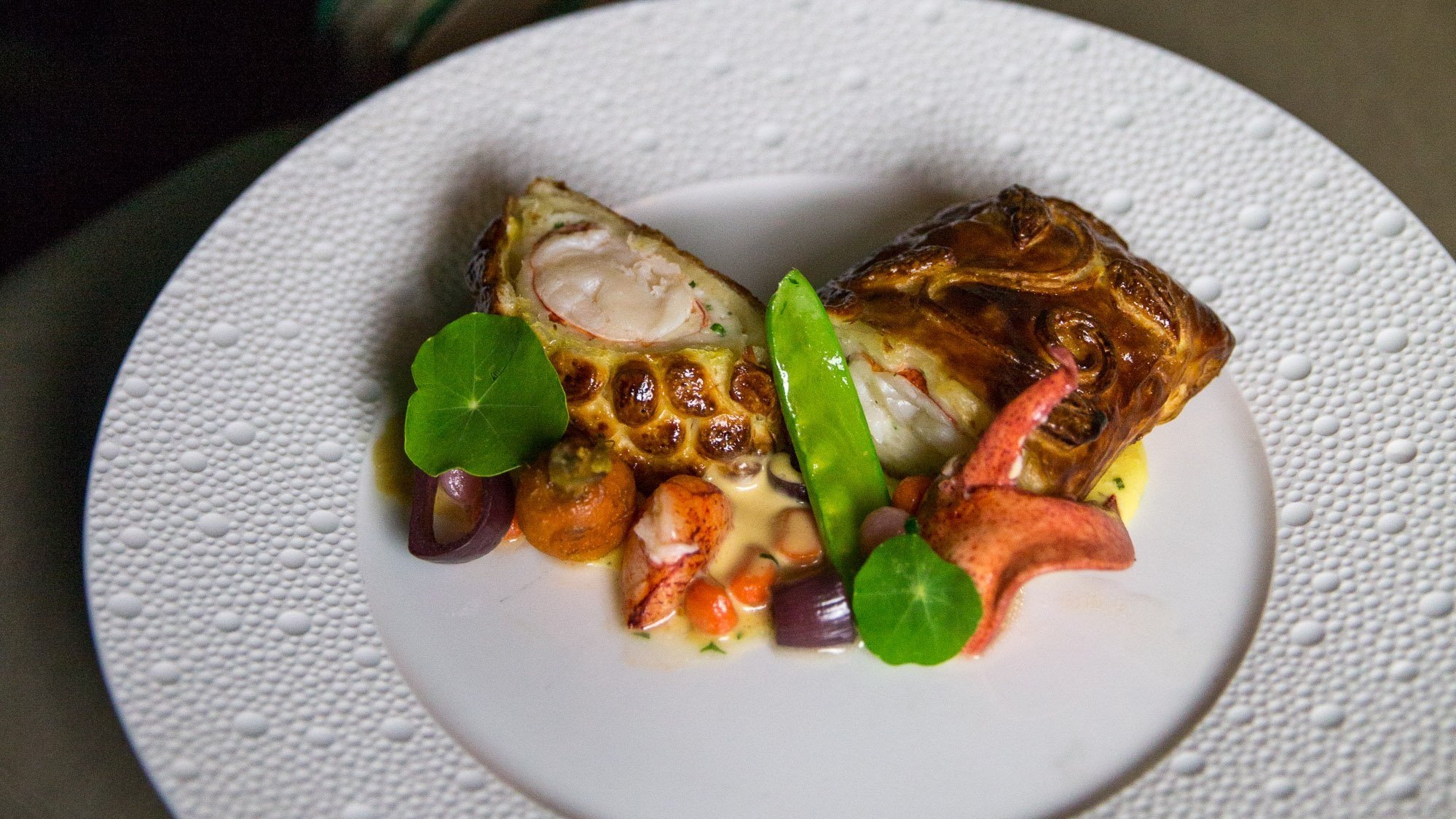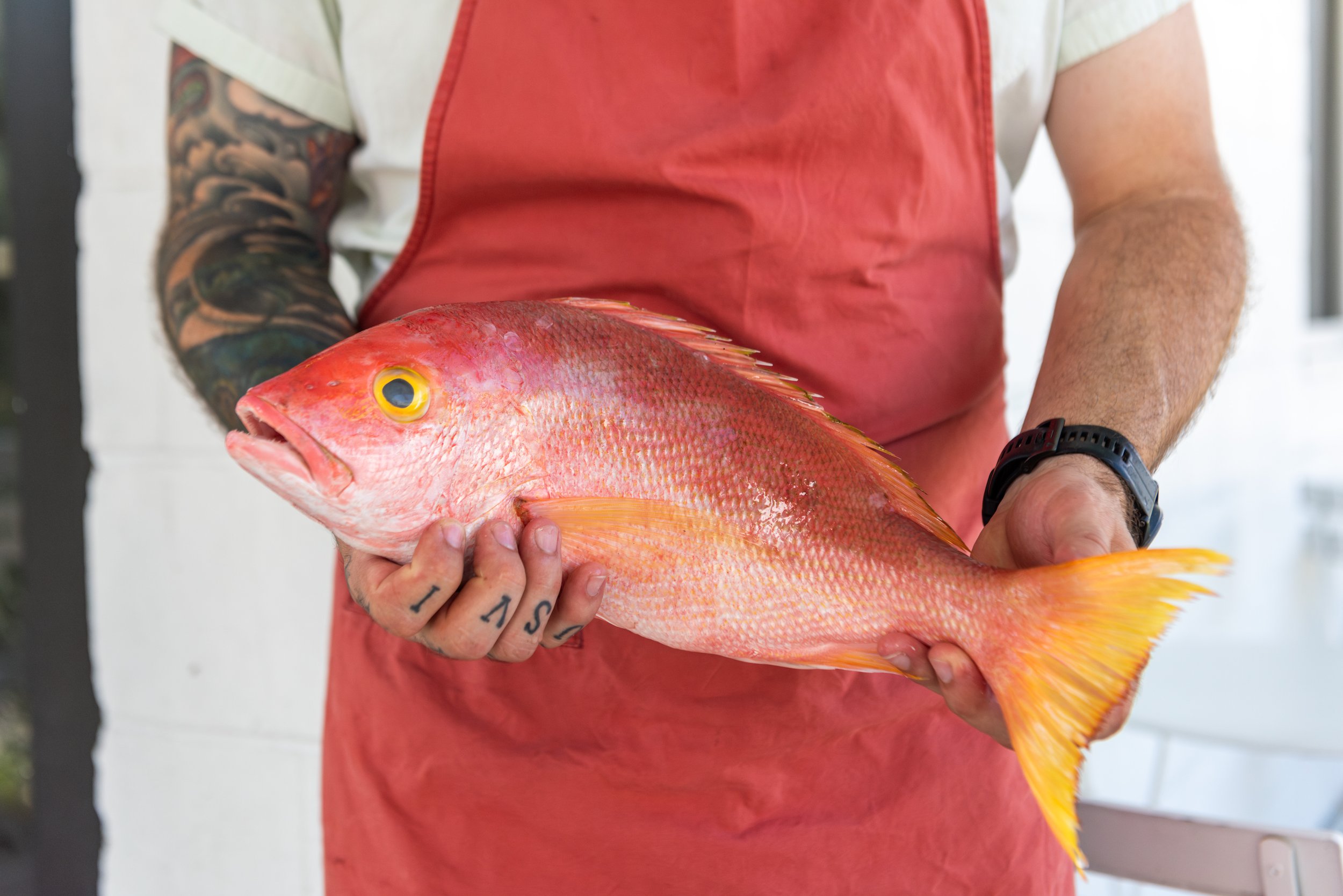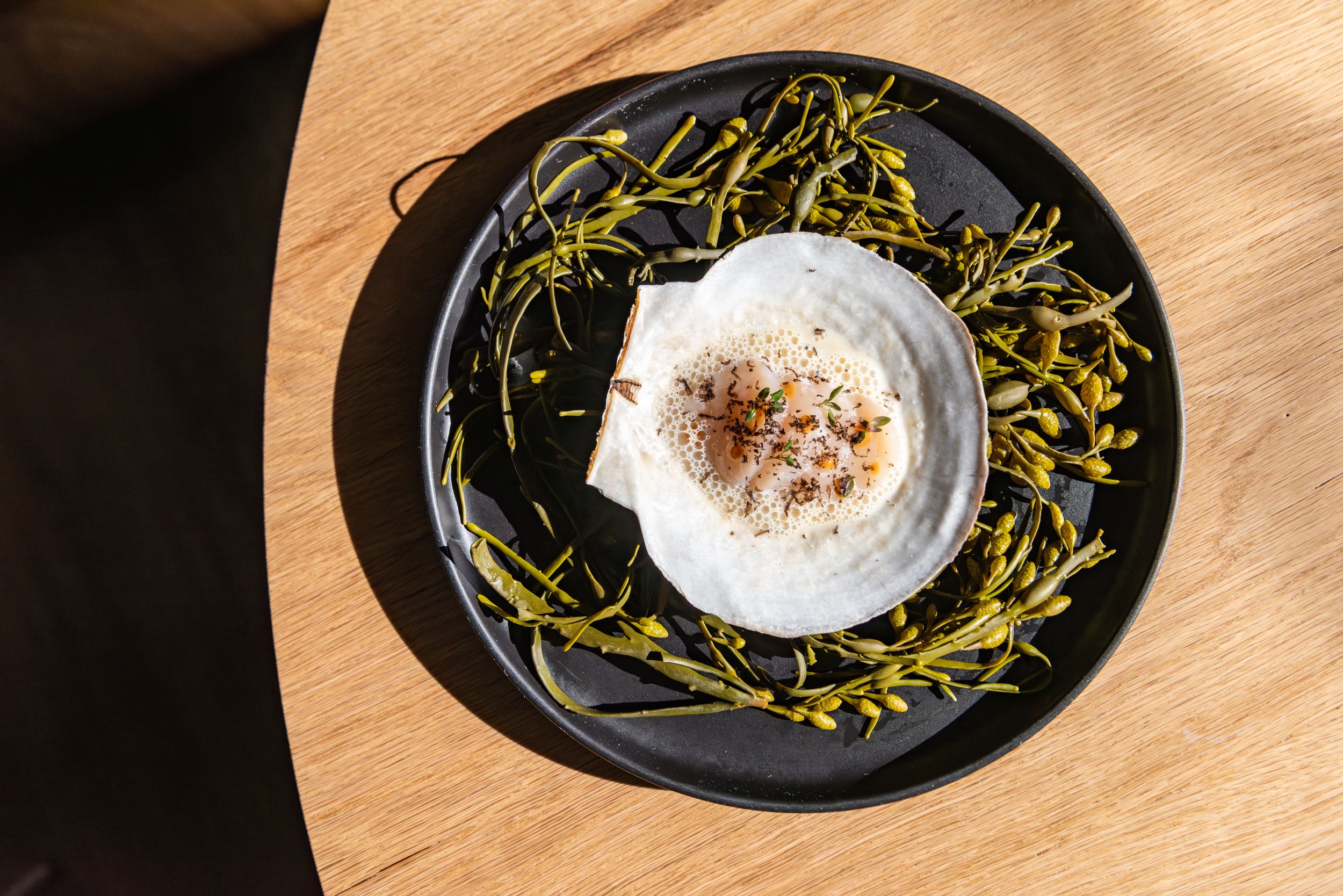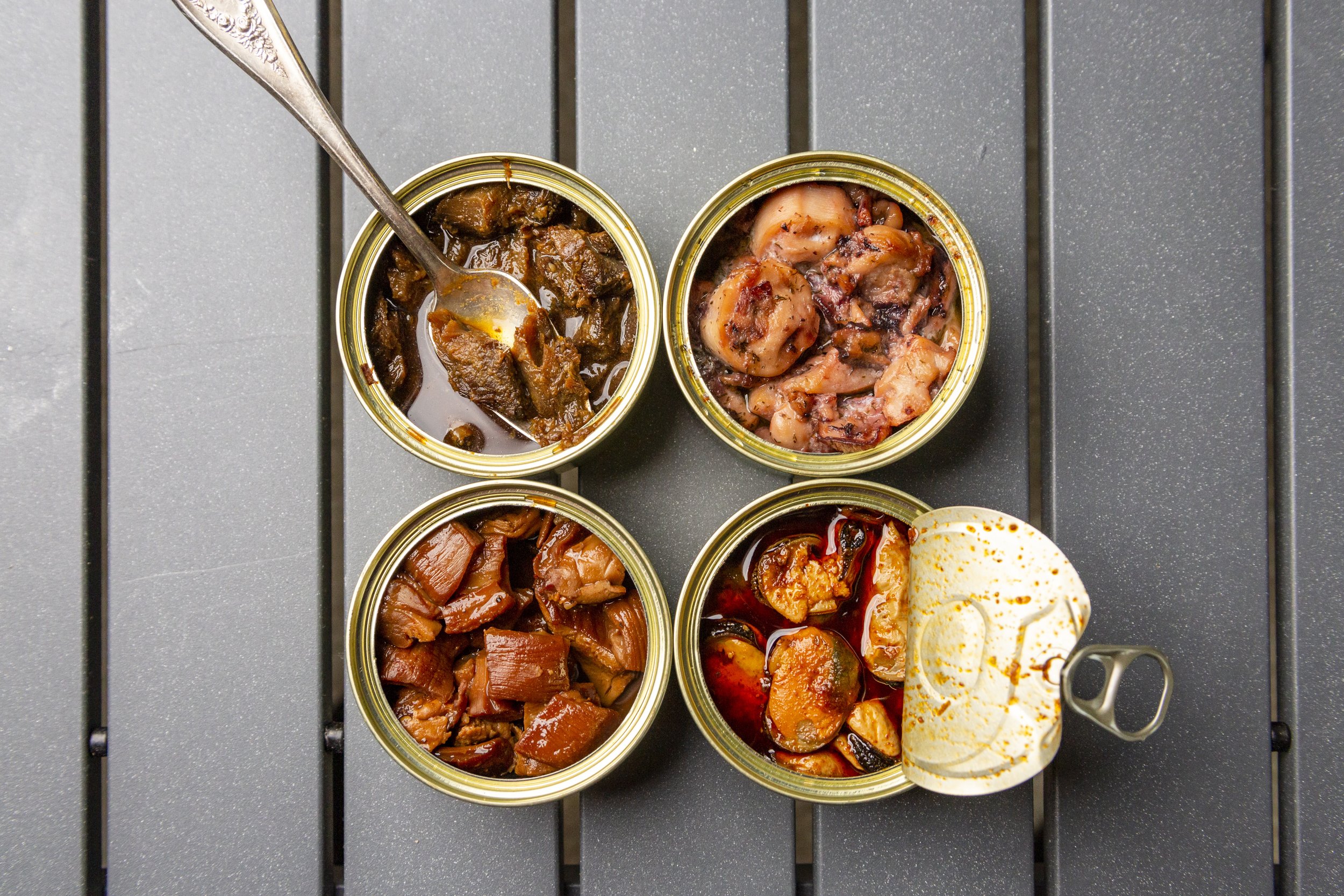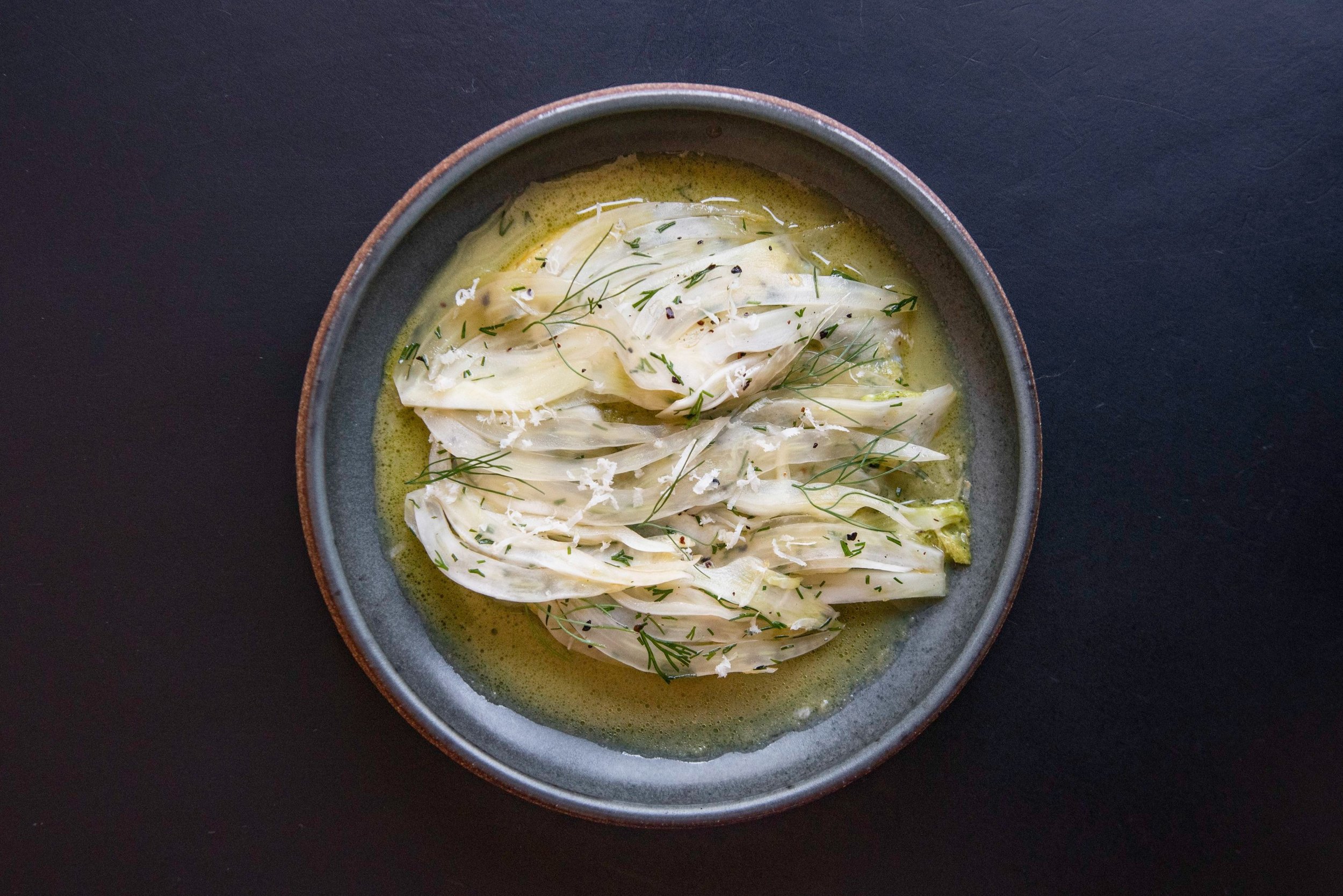Flawless, Fabulous, French Lobster en Croûte in 29 Steps
Do you have what it takes—including a baller team—to make Atlas’ lobster en croute?
Chef Chris Grossman's Lobster en Croûte.
Chris Grossman wasn’t made for the age of 30-second Instagram videos and two-touch restaurant pick-ups. He has 10 cooks on the line at Atlas in Buckhead’s St. Regis Hotel, and one of the “toughest garde manger stations in the world,” says Grossman.
He’s more than capable of simple elegance—think fettuccine, crème fraîche, lemon, chives, and caviar—but it’s dishes like lobster en croûte that capture the essence of his technique-driven, detail-obsessed, classics-leaning cuisine. Preparing the dish is a virtual Bocusian workout of laminating dough, emulsifying boudin blanc, poaching and encasing lobster, and whipping together lobster sabayon. Here, in 29 steps, is how you, too, can reach Atlas excellence with lobster en croûte.
Tie lobsters together with butcher’s twine.
Blanch in boiling water 3 minutes; season every 22 quarts water with 1 cup white vinegar.
While hot, break down lobsters, removing all meat from the carcass.
Shock in ice water and set tails aside.
Into a food processor, combine scallop, shrimp, lobster, potato starch, pink salt, sugar, and kosher salt.
While puréeing, slowly incorporate egg whites until mixture is homogenous.
Add crème fraîche and pulse.
Slowly incorporate cream until it just comes together.
Place mousse in a bowl set inside an ice bath (keep mousse below 40°F) and stir in finely chopped fines herbes by hand.
Chill all ingredients and tools to 32°F to 35°F.
Lay out a piece of plastic wrap and dust with Activa RM.
Spread a ¼-inch thick x 4-inch x 5-inch rectangle onto plastic wrap.
Dust mousse with more Activa.
Place the lobster tail upside-down, slightly above the center of the mousse.
Bring the top of the plastic wrap toward you, folding over the mousse onto the lobster, forming a roulade, and encasing the lobster in an even layer of mousse.
Smooth out any air pockets with a bowl scraper.
Place in refrigerator and rest at least one hour, allowing Activa to help set the exterior of the mousse.
Slightly temper croissant dough.
Pass dough through sheeter until 3/16-thick.
Divide dough into 2 pieces—the top piece slightly longer than the bottom.
Unwrap and lay the lobster roulades on the bottom dough sheet, leaving a generous inch between.
Lay the top sheet of dough on top, guiding the dough to minimize stretching and misshaping.
Gently press around each roulade, starting at the top of the lobster and working down toward yourself, making sure there are no air pockets and pressing the layers to an even thickness.
Refrigerate at least 1 hour.
Heat a combination oven to 400°F with medium fan.
Egg wash the Lobster en croûte evenly.
Using pastry tip, punch a small hole at the top center of the en croûte.
Bake 9 to 12 minutes, checking lobster’s temperature with a cake tester. If lobster is not hot enough and there is too much color, reduce fan and oven temperature, until the desired doneness is achieved.
Immediately slice Lobster en croûte into 3 offset pieces for presentation.

